As Eid-ul-Adha approaches I feel an uneasiness growing inside of me. While Dhul-Hajj is easily my favourite lunar month after Ramadhaan, the day of Eid leaves me a little anguished, to put it mildly. When I was much younger, we performed the ritual slaughter at home. My father and his cousins were meticulous in the construction of the day’s events. The sheep were housed in a pen downstairs, completely removed from the slaughtering site (the back garden) or the skinning yard (the balcony). Each animal would be brought up by itself; the children would play with it, feed it water and generally calm it down. Thereafter it would be led to the slaughtering site and would be slaughtered (quickly and without causing the animal harm) while everyone in the vicinity joined in the prayer. Only after the previous animal had been moved on to the skinning yard was the next one fetched from the pen. It was a graceful affair.
For the past few years however, we’ve had to slaughter our sheep (and cows) at Muslim-owned commercial farms. It seems to be the norm these days. On these farms, due to the high volumes of cattle being slaughtered, things proceed somewhat mechanically. Sheep 377, sheep 378, sheep 379. It is a tense situation; for the farmers, the animals and to a lesser extent, the crowds. What (sometimes) proceeds is the cause of my anguish: unnaturally excited crowds, animals being slaughtered in view of other animals, animals becoming extremely aggressive before slaughter (no doubt because of the crowds that have gathered for the show) and a general fiasco. I hear children of 6 or 7 screaming with delight as ‘another one bites the dust’ (how is this even normal?), farmers taking out their frustrations on the crowds and arguments ensuing between the various families waiting their turn (all of whom are trying to get their sacrifices done before lunch on the first day of the 3 days of Eid!). There is little respect for the animals and derisory understanding of the entire “zabiha” process. Last year, after a traumatic experience with the bull that we were slaughtering, I vowed never to go back.
Islam is explicit about the methods of zabiha, sacrifice and animal rights. A hadith of the messenger of Allah (pbuh) teaches, “Allah has commanded that everything (one does), they should do with excellence (ihsaan). When you sacrifice, sacrifice well. Sharpen your knife and make it easy for the animal to be slaughtered.” While the example of animal slaughter is illustrative of a broader lesson and principle – that is of practicing ihsaan in all that we do, it would be imprudent to overlook its inclusion. Not only are Muslims required to pronounce the name of God on animals being sacrificed to make them permissible for consumption [Qur’an 6:118], but they are also required to slaughter in a manner that would be easy for the animal. Likewise, it is considered offensive to slaughter one animal in view of another or to keep animals waiting in a queue for the slaughter. The Prophet (pbuh) was known to reprimand his Companions for mistreating animals and reminded them to be kind and merciful instead. A hadith declares it reprehensible to sharpen one’s knife in the presence of the animal as this would be unmerciful towards the animal: “Do you wish to slaughter this animal twice, once by sharpening your blade in front of it and another time by cutting its throat?”
‘Alī Ibn Abi Bakr al-Marghīnānī, the 12th century Hanafi jurist in his compendium, the Hedaya, writes in the chapter on the lawful killing of animals for food that “everything which unnecessarily augments the pain of the animal is abominable; it is abominable to seize the animal destined for slaughter by the feet; it is abominable to break the neck of the animal whilst it is in the struggle for death; it is abominable to first throw the animal down on its side, and then to sharpen the knife (in its presence)…” It takes little consideration to appreciate that this differs vastly from the scene described above – which, no doubt, is a depiction of most, if not all, commercial farms.
The humanity, justice and mercy of Islam prescribed in the Qur’an and sunnah extend to all who inhabit the earth: humans, animals, birds, insects and plants, with cruelty to any one of them being sufficient reason for being cast into the fire! A hadith of the messenger likens animals to humans: “A good deed done to an animal is like a good deed done to a human being, while an act of cruelty to an animal is as bad as cruelty to a human being.” While Allah says in the Qur’an, “there is no creature on [or within] the earth or a bird that flies with its wings except [that they are] communities like you (6:38)”. Yet despite this rich intellectual tradition that extends more than 1400 years, Muslims are largely silent on the subject of animal rights. Why do we, as a community, not raise our voices on issues that really matter? Why are we not at the forefront of the animal rights or the environmental justice movement? Why do we not go back to the moral and ethical frameworks that our texts espouse and create institutions that promote and uphold these high standards?


